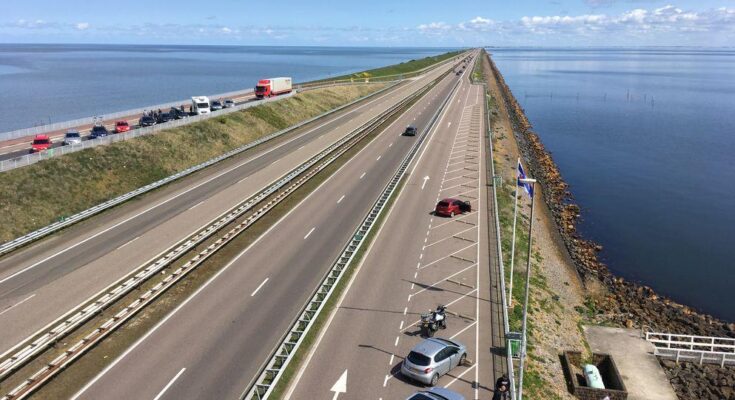One of the most fascinating engineering projects in the Netherlands is the Afsluitdijk, a remarkable 20-mile-long (32-kilometer) dike that plays a crucial role in the country’s water management. Constructed between 1927 and 1932, this massive structure separates the North Sea from the IJsselmeer, an expansive artificial bay, and serves as a vital flood defense system. Beyond its functional importance, the Afsluitdijk is also one of the Netherlands’ key roadways, linking the provinces of North Holland and Friesland.

A Historic Feat of Engineering

The Netherlands has a long history of battling the sea, and the Afsluitdijk stands as a testament to the country’s ingenuity and determination. Before its construction, the Zuiderzee, a shallow inlet of the North Sea, posed a constant flooding threat to the surrounding low-lying areas. The Dutch government initiated the Zuiderzee Works, a series of ambitious land reclamation and flood protection projects, with the Afsluitdijk being one of its most significant accomplishments.
Built using sand, clay, and boulders, the dike was meticulously reinforced to withstand the relentless power of the sea. Upon its completion in 1932, the structure successfully transformed the former saltwater Zuiderzee into the freshwater IJsselmeer, drastically improving flood control and enabling large-scale agricultural development in the reclaimed land.
A Vital Transportation Link

Beyond its role as a flood defense system, the Afsluitdijk serves as a major transportation artery. The A7 highway runs across the dike, providing a direct and efficient route between the provinces of North Holland and Friesland. The scenic drive along the dike offers breathtaking views of the North Sea on one side and the tranquil IJsselmeer on the other, making it a unique experience for travelers.
Modern Upgrades and Sustainability Efforts
As sea levels continue to rise and climate change poses new challenges, the Dutch government has embarked on an extensive renovation project to reinforce the Afsluitdijk. The upgrades, which began in 2018, aim to enhance the dike’s resilience to extreme weather conditions and further improve flood protection.
Innovative additions include the installation of powerful new pumping stations to regulate water levels, as well as the reinforcement of the dike with stronger materials. Sustainability is also a key focus of the renovation, with solar panels and fish migration pathways being incorporated to promote ecological balance and energy efficiency.
A Symbol of Dutch Innovation
The Afsluitdijk remains an iconic example of Dutch water management expertise and innovation. It not only protects vast areas of land from flooding but also stands as a symbol of human ingenuity in overcoming natural challenges. With continuous improvements and modern adaptations, the Afsluitdijk is set to remain a cornerstone of the Netherlands’ defense against the sea for generations to come.
For visitors, the Afsluitdijk offers more than just an engineering marvel. The interactive Afsluitdijk Wadden Center provides insights into its history and ongoing innovations, making it a must-visit destination for those interested in Dutch engineering and environmental sustainability.



